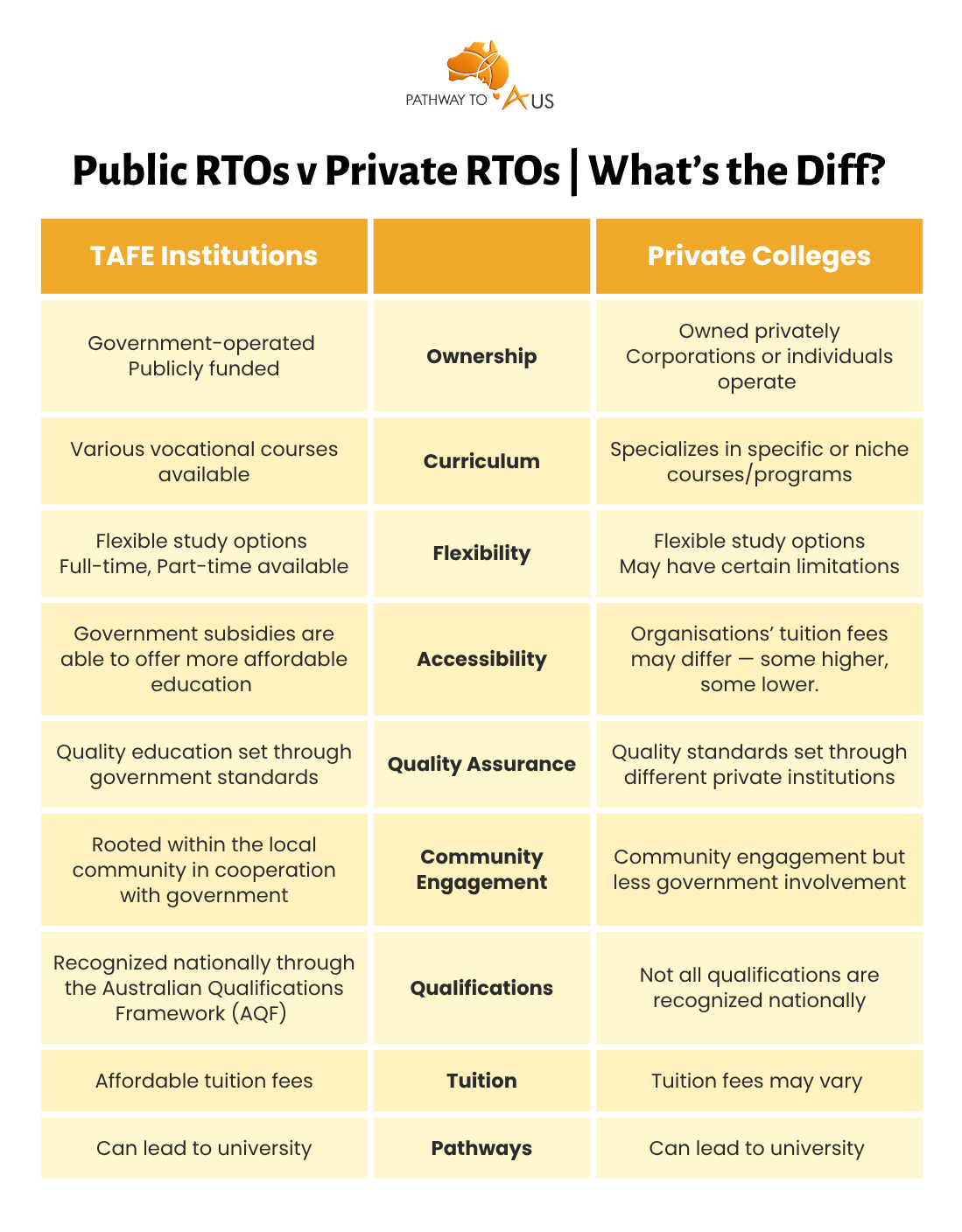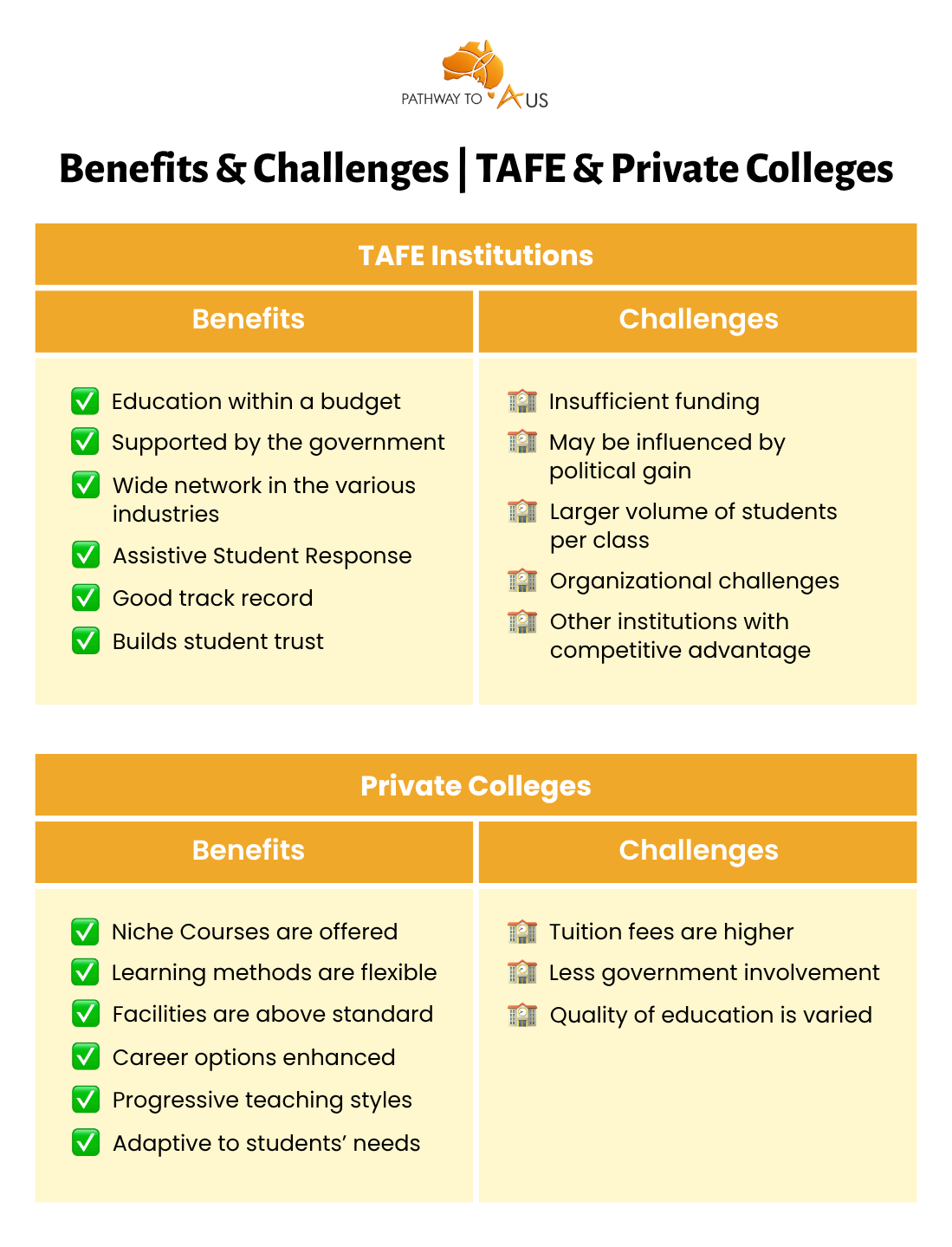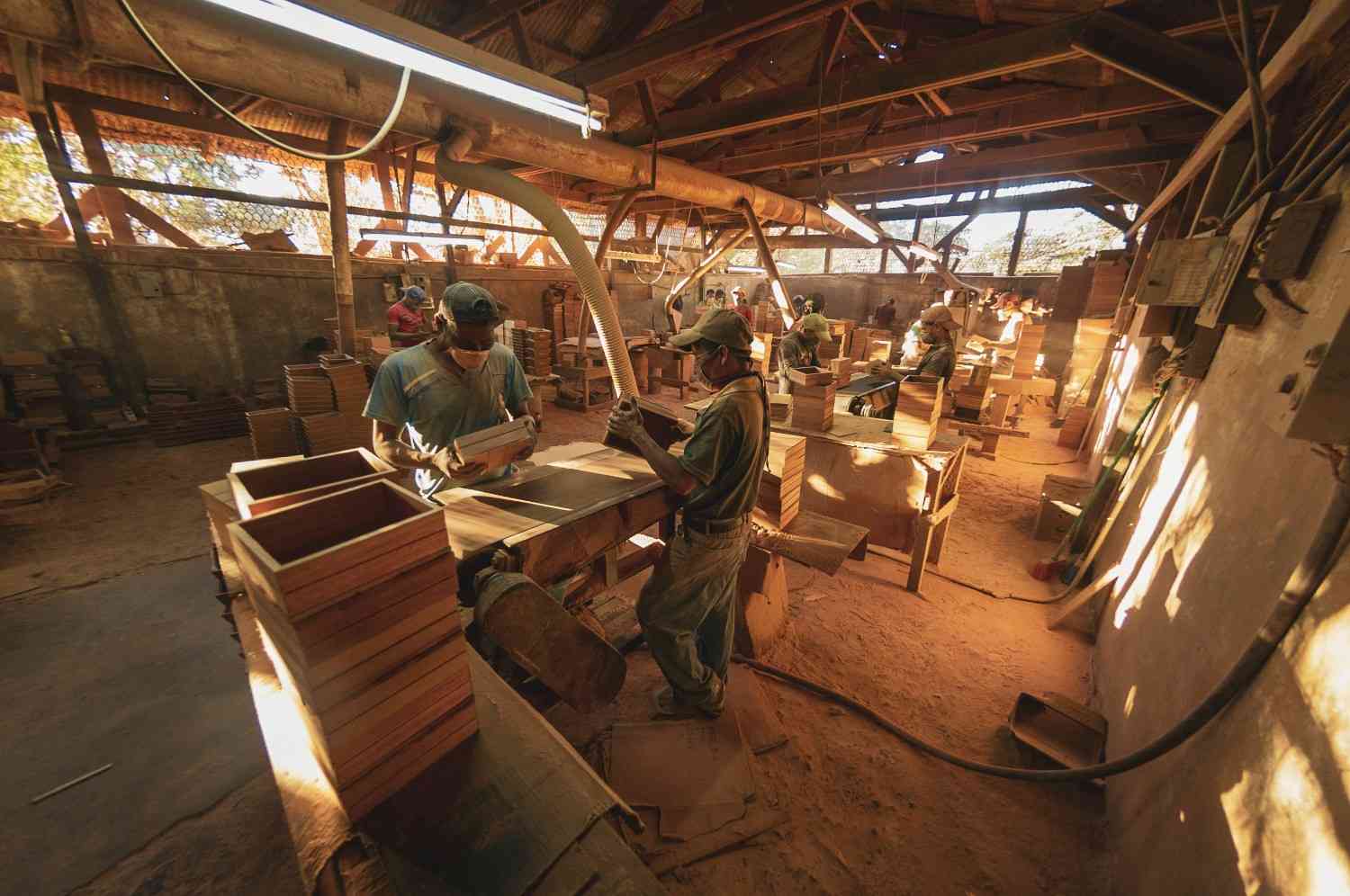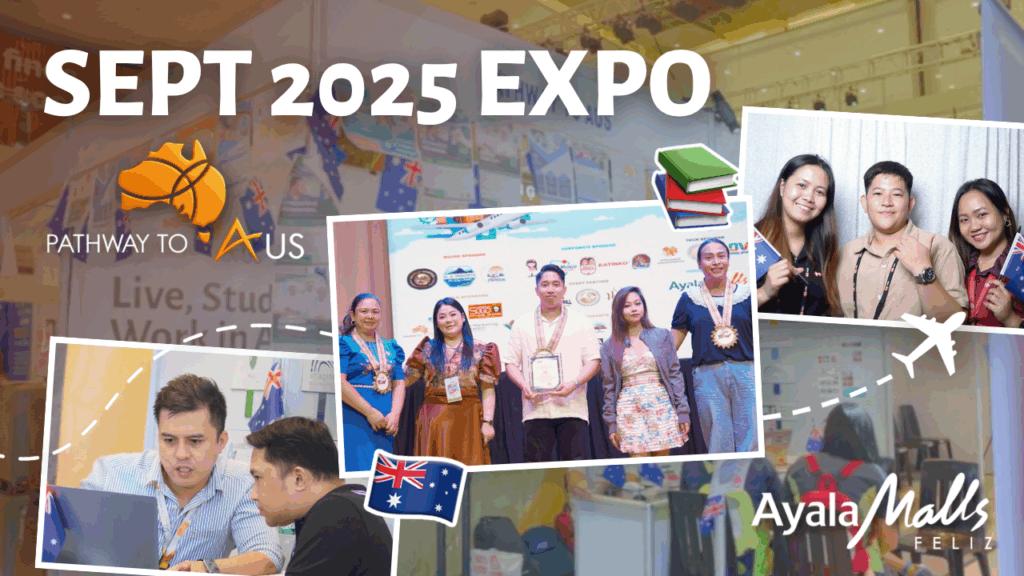What’s Trade Work?
These are skilled careers that need specialised schooling which eventually leads to work that focus on experience-based abilities and on-the-job training. Occupations such as Commercial Cookery, Carpentry, Airconditioning & Refrigeration, Electrical Engineering, Wall & Floor Tiling, and Bricklaying are several examples.
NOTE: Please note that not every application means approval. Every submission is assessed thoroughly, and there are no guarantees of visa approval. If you submit all the requirements needed, have met eligibility, and have followed the process, then a positive outcome is highly likely.
Want to see the full list of Trade Courses available?
Learning the Letters | Terms to Know
Before we jump into talking about where you’ll study, let’s get to know a few important terms that might come in handy when starting your study journey.
RTO
Registered Training Organisation – these are nationally-recognised providers of Vocational Education and Training (VET). They make sure that students learn the necessary skills that are relevant to their occupation and to the workforce.
TAFE
Technical and Further Education – it’s the vocational education and training system in Australia. They provide programs that offer certificate, diploma, and degree courses in different regions in the country.
ASQA
Australian Skills Qualification Authority – the national regulator for vocational education and training in Aus
AQF
Australian Qualifications Framework – the national policy guide for regulated qualifications in education and training
Public RTOs v Private RTOs | Differences, Benefits & Challenges


Which is the better choice — TAFE or Private Colleges?
From what we’ve gathered, there is no real right or wrong choice when deciding on which school you want to enrol in. What’s important is if the educational institute’s teaching style, specialised skills offered, class scheduling, tuition range, and study goals align with your own. Whichever you choose, there will be opportunities and challenges that come with it. Your study journey involves a lot of hard work, determination, and perseverance.
A certificate’s value is the same no matter where you attain it. What really matters is that you choose a school that caters to the learning style that works for you.
On the Road to Migration
By enrolling through Public or Private RTOs, you can explore options for work or permanent residency and be assisted by our expert migration agents here at Pathway to Aus. Once a student visa is secured and the course is completed, a Graduate Visa (485) or other skilled migration visas may be available, especially if the course is on the relevant skills list.
The pathway typically follows a clear progression: enroll, develop your vocational skills, gain practical experience, and explore various post-study work options that may support long-term career goals in Australia. This can be a long and arduous process, but do we think it’s worth it? Absolutely.
Steps to PR with Pathway to Aus
1. Enrol to a Course
Be trained in a position on the Medium and Long-Term Strategic Skills List (MLTSSL).
2. Apply for 485 Visa
After graduation, this temporary work visa allows you to remain in Australia.
3. Pass a Skills Assessment
Your education completed should meet the education requirements for a skills assessment.
4. Apply for a Work Visa
After receiving a positive skills assessment, you may be eligible for the Skilled Regional (491), Skilled Nominated (190) or Skilled Independent (189) Permanent Work Visas to Australia.
Taking the Trade Work Path
Whether enrolling in TAFE or in a private college, the pathway to trade work is one that is fulfilling. We suggest you learn more about the courses and schools that pique your interest and see what would work best for you. Whichever you choose, we’re sure it will greatly increase your prospects of achieving career and migration success.






